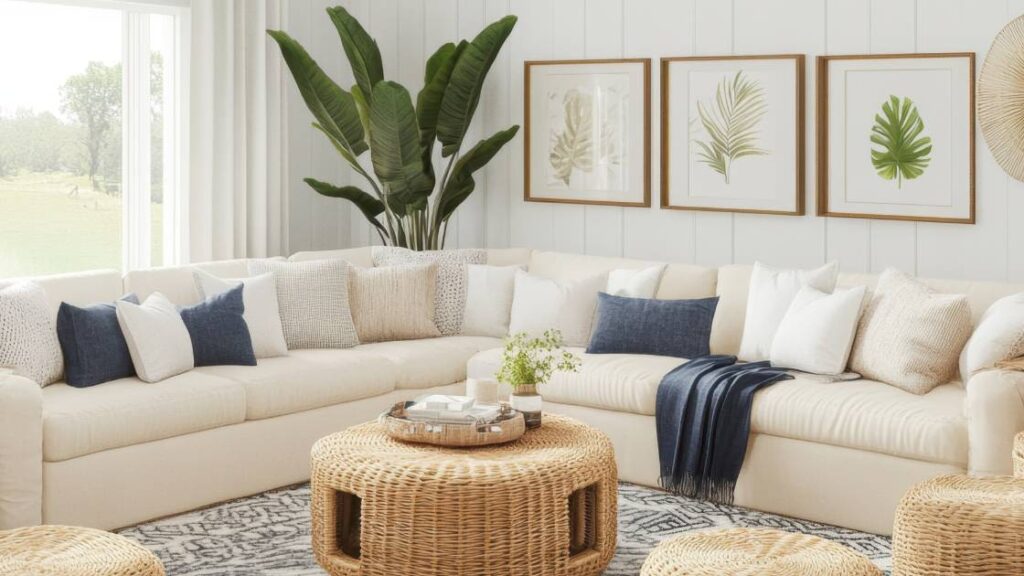Have you ever looked around your home and felt like something was missing? Maybe the layout feels awkward, the colors don’t quite connect, or it just doesn’t feel like you. That desire for change is the first step toward creating a space that not only looks beautiful but also supports your lifestyle. As a San Diego interior designer, I’ve seen firsthand how thoughtful design can completely transform a home.
A transformation doesn’t always require a full-scale demolition. Often, it’s about making strategic changes that have a major impact. By applying a few professional techniques, you can refresh your rooms and make your home feel brand new.
These expert tips will guide you through the process, helping you make confident decisions to unlock your home’s true potential.
Start with a Clean Slate: The Power of Decluttering
Before you can bring in new ideas, you need to make space for them. Decluttering is the single most effective way to start any design transformation. It allows you to see your space clearly, understand what you truly need, and create a foundation for a more organized, serene environment.
To tackle this, go room by room and sort your belongings into four categories: keep, donate, store, or discard. Be honest with yourself about what you use, what you love, and what is simply taking up space.
A cluttered room often feels chaotic and small. By clearing out the excess, you instantly create a sense of openness and calm, making the next steps in your design journey much easier. Think of it as a reset button for your home.
Choose Furniture That Fits Your Life and Your Space
Furniture is the backbone of any room’s design and function. The right pieces can make a space feel comfortable and look cohesive, while the wrong ones can create a sense of imbalance and frustration.
Function First, Form Second
Before falling in love with a stunning sofa or a unique coffee table, think about how you use the room. Is this a formal living room for entertaining guests or a cozy family room for movie nights? Your lifestyle should dictate your furniture choices.
You need pieces that are not only beautiful but also practical for your daily activities. For example, a family with young children might benefit from a durable, stain-resistant sectional over a delicate linen sofa.
Master the Art of Scale
One of the most common design mistakes is choosing furniture that is either too large or too small for the room. A bulky sofa can overwhelm a small living room, while a tiny rug can make a large space feel disconnected. Before you buy, measure your room and map out potential furniture placements with painter’s tape on the floor. This helps you visualize the scale and ensure there’s enough room for comfortable traffic flow. As a rule of thumb, leave about 18 inches between your sofa and coffee table and at least 3 feet for major walkways.
Make a Statement: The Impact of a Focal Piece
Every great room has a star—a statement piece that draws the eye and sets the tone. This focal point adds personality and prevents the space from feeling monotonous. It’s an opportunity to showcase your style and make a bold impression.
Your statement piece could be:
- A Bold Piece of Furniture: Think of a velvet armchair in a jewel tone, a live-edge dining table, or a uniquely shaped bookshelf.
- Large-Scale Artwork: A single, oversized piece of art can command attention and act as the inspiration for your room’s color palette.
- An Intricate Rug: A patterned or vividly colored rug can anchor a seating area and bring energy to the entire room.
- A Dramatic Light Fixture: A sculptural chandelier or a modern pendant light can serve as functional art, elevating the design of your space.
Choose one or two statement pieces per room to avoid a cluttered or competitive look. Let this item be the hero, and arrange other elements to support and complement it.
Illuminate Your Home: The Magic of Lighting
Lighting is one of the most powerful and often overlooked elements in interior design. A good lighting plan can make a room feel larger, cozier, and more inviting, while highlighting all your thoughtful design choices. The key is to use layers of light.
Ambient Lighting
This is the overall illumination for the room, your primary light source. It’s often provided by overhead fixtures like chandeliers, flush mounts, or recessed lighting. The goal of ambient light is to make the space safe and easy to navigate.
Task Lighting
As the name suggests, task lighting is directed light for specific activities. This includes reading lamps next to a chair, pendant lights over a kitchen island, or under-cabinet lighting for meal prep. Good task lighting reduces eye strain and makes daily routines more enjoyable.
Accent Lighting
Accent lighting is the jewelry of your room. It’s used to highlight specific features, such as a piece of art, a textured wall, or an architectural detail. Track lighting, wall sconces, and picture lights are common forms of accent lighting that add depth and a touch of drama.
By combining all three types, you create a flexible and dynamic lighting scheme that can adapt to any mood or occasion.
Let’s Create Your Dream Space Together
Transforming your space is a journey of creativity and self-expression. By decluttering, choosing the right furniture, incorporating statement pieces, and mastering lighting, you have the power to create a home that is both beautiful and deeply personal.
If you’re ready to take the next step but would appreciate professional guidance, I’m here to help. As a San Diego interior designer, I specialize in turning design dreams into reality. Contact Brandi Bernardino Designs today, and let’s work together to transform your space.



